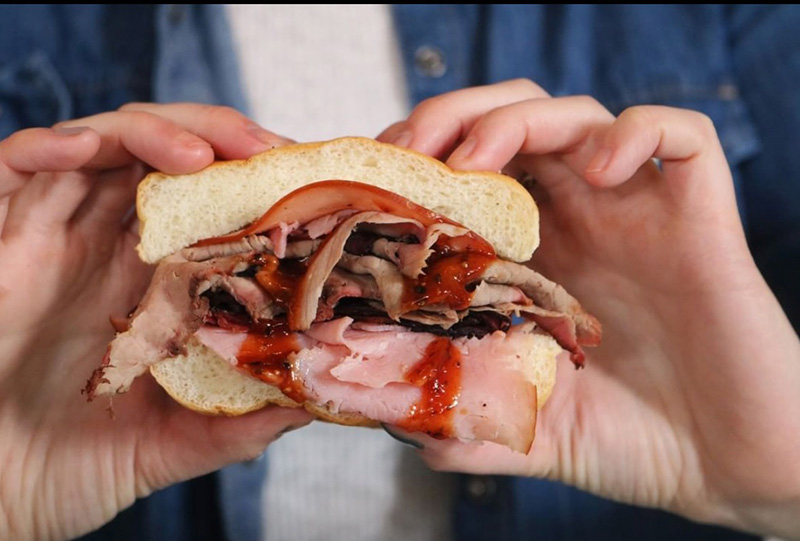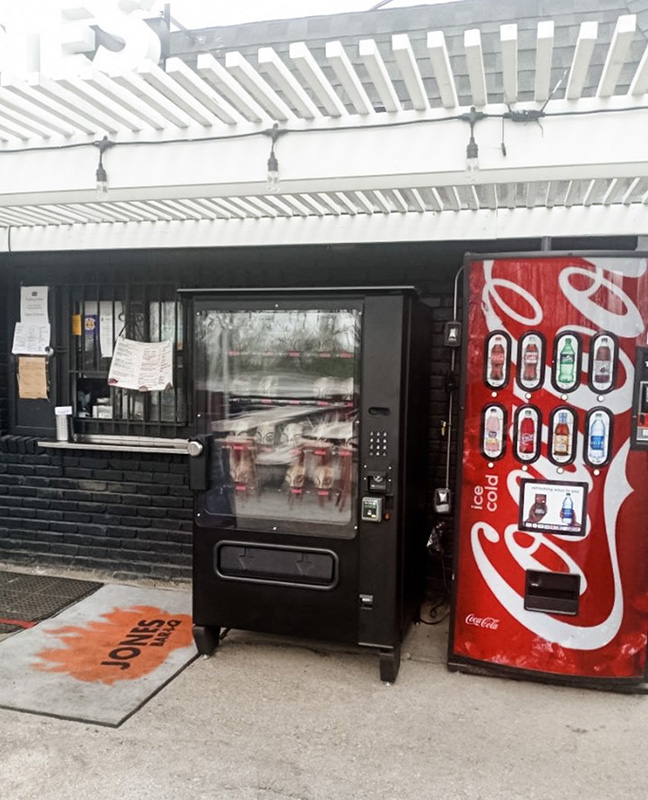ON THE SAFER SIDE
New health precautions will drive the way food service operators serve food.
As shelter-in-place orders forced countless restaurants to close and others to experiment with new to-go models, Dave Miller wrote a Facebook post on April 4 to answer a question weighing on diners’ minds: "Is it still safe to order food from a restaurant?"
Miller, who owns a breakfast-lunch restaurant in Chicago with his business partner wife, Megan, outlined the extra safety precautions they were employing. It reads like a posting from the future – an all-encompassing safety checklist that restaurants may find themselves adopting in some form in the months to come. After reaching out to hospital and medical professionals, Miller launched the following safety initiatives:
- All outside vendor deliveries are sanitized before entering the front door
- Rather than enter the restaurant, customers receive orders through a newly designed pick-up window
- Employees undergo regular temperature checks, wear gloves, change shoes upon entering and refrain from taking public transportation during the crisis
- A towering air fan, positioned by its counter, generates negative air flow, thus blocking customer’s airflow from reaching its staff
- A commercial ozone generator is run for eight hours every day when the shop is empty, which some studies suggest may eliminate superbugs and viruses
Miller estimates he’s spent over $3,000 dollars on his new safety measures and is willing to spend up to $10,000.
“So it isn’t cheap,” says Miller, “But it’s worth it for my own sanity and to know I went way above and beyond to protect our team, ourselves and our customers. And our guests have loved it. The social media posts we’ve done about our safety techniques are actually some of our all-time top-performing posts. To me, that means people care and want to know that we’re paying attention.”
In a post-shutdown industry, diners will expect restaurants to practice heightened sanitation that convey safety and psychological reassurances. Most operators agree that contactless delivery – widely practiced by operators that are staying open during statewide stay-in-place orders – will become the norm. But what else? Here is what public health experts and restaurant owners anticipate to resume full operations:
 Virus Information
Virus Information
Restaurants and other face-to-face businesses need more data on the biology of the coronavirus to safely reopen, says Michael Mina, an infectious disease epidemiologist at the Harvard School of Public Health. “We need to have a better understanding of the true individual-level risk of becoming infected and how it may differ depending on age.”
 Protective Barriers
Protective Barriers
Aside from removing tables, restaurants may need to erect barriers, such as screens or walls, between diners, Mina says. Restaurants in Asia are already practicing such measures.
 Masks
Masks
Some restaurants are following the Centers for Disease Control and Prevention’s recommendation that everyone wear masks. Anti-fogging, transparent plastic masks that let servers easily breathe and talk while blocking the spread of germs may also come into use, says Eojina Kim, assistant professor in
the Department of Hospitality & Tourism Management at Virginia Polytechnic Institute and State University. “Customers can still see staff’s faces, so it won’t generate any hostility,” she says.
 Gloves
Gloves
Mighty Quinn’s Barbeque owner Micha Magid says it isn’t clear yet how food handlers will be outfitted when dining rooms reopen at his three restaurants in Manhattan and New Jersey. “Let’s just say everything is on the table,” he says.
While some operations already require gloves, it’s likely to be a point of debate whether servers and other workers wear disposable gloves or need to change between each table they wait on.
 Relentless Cleaning
Relentless Cleaning
“We are wiping down surfaces as often as possible,” says Magid. “This includes doorknobs, doors, handles, counters – anything and everything that comes in contact with an employee or guest.”
 Sanitizer Gel Stations
Sanitizer Gel Stations
Alcohol gel and hand wipes may be available for people entering and exiting restaurants. Hand-sanitizing stations could be scattered throughout dining areas.
 Service Tweaks
Service Tweaks

Restaurants might begin offering single-use cups, end reusable straws and remove condiments from tables. Temperature-controlled food from vending machines, such as the chicken wings and sandwiches from Jones Bar-B-Q in Kansas City, Kansas, could become popular.
 Signage
Signage
 Posted alerts may urge customers not to congregate and, if social distancing advisories are still in effect, to maintain at least a 6-foot distance from others.
Posted alerts may urge customers not to congregate and, if social distancing advisories are still in effect, to maintain at least a 6-foot distance from others.
“(We’re) readying additional signage such as floor decals to encourage social distancing,” says Maisie Ganzler, chief strategy and brand officer for Bon Appetit Management Co., a foodservice company for universities and corporations. “We do also anticipate fewer self-service stations to allow for better control over serving utensils and crowding of guests.”
 Temperature Checks
Temperature Checks
Eateries may stand ready with a thermometer to make sure guests and staff (which some restaurants have started) aren’t showing signs of illness. Sichuan Impression in Los Angeles announced in January that it would check customers’ temperatures before letting them inside.
It’s a common practice in parts of Asia and would be a good short-term policy in the U.S. while concerns about the coronavirus are still top of mind, says Kim, who served for 10 years as a senior researcher at the Korea Institute for Health and Social Affairs.
Over the long run, however, checking patrons’ temperatures would slow down operations and potentially alienate customers, she says. A better measure could be to monitor employees’ temperatures before they start work.
 A National Safety Protocol
A National Safety Protocol
While the FDA and state health departments will likely address new safety measures, some prominent chefs are calling for action now. Celebrity Chef David Chang was among the first to vocalize that a national protocol needs to be developed. “...everyone needs to be working off the same playbook,” Chang tweeted on April 8.
 Training and Rule Changes
Training and Rule Changes
Safety, sanitation and personal hygiene practices will be rewritten to address the coronavirus. “Everyone from executive management to team members will need to be properly trained and educated on these new protocols,” says Francine Shaw, CEO of Savvy Food Safety. The pandemic may drive changes to the FDA’s advisory Food Code. Culinary schools will revamp hygiene education as well.
 Transparency
Transparency
Seeing is believing, and transparency is essential, Kim says. Customers will want to see staff, especially in open kitchen setups, practicing maximum personal hygiene to reduce anxiety about eating out.
Make sure you explain to customers what you’re doing and how it minimizes any risk, says Seth Feuerstein, assistant clinical professor of psychiatry at Yale University.
But restaurants themselves will have the main role in showing they’re still places where you go to be fed, nourished and safely taken care of.
“No question, we are all going to be enduring a new normal,” Shaw says. “It’s going to take a bit to establish what that will be, especially when we don’t completely understand what we are up against.”

